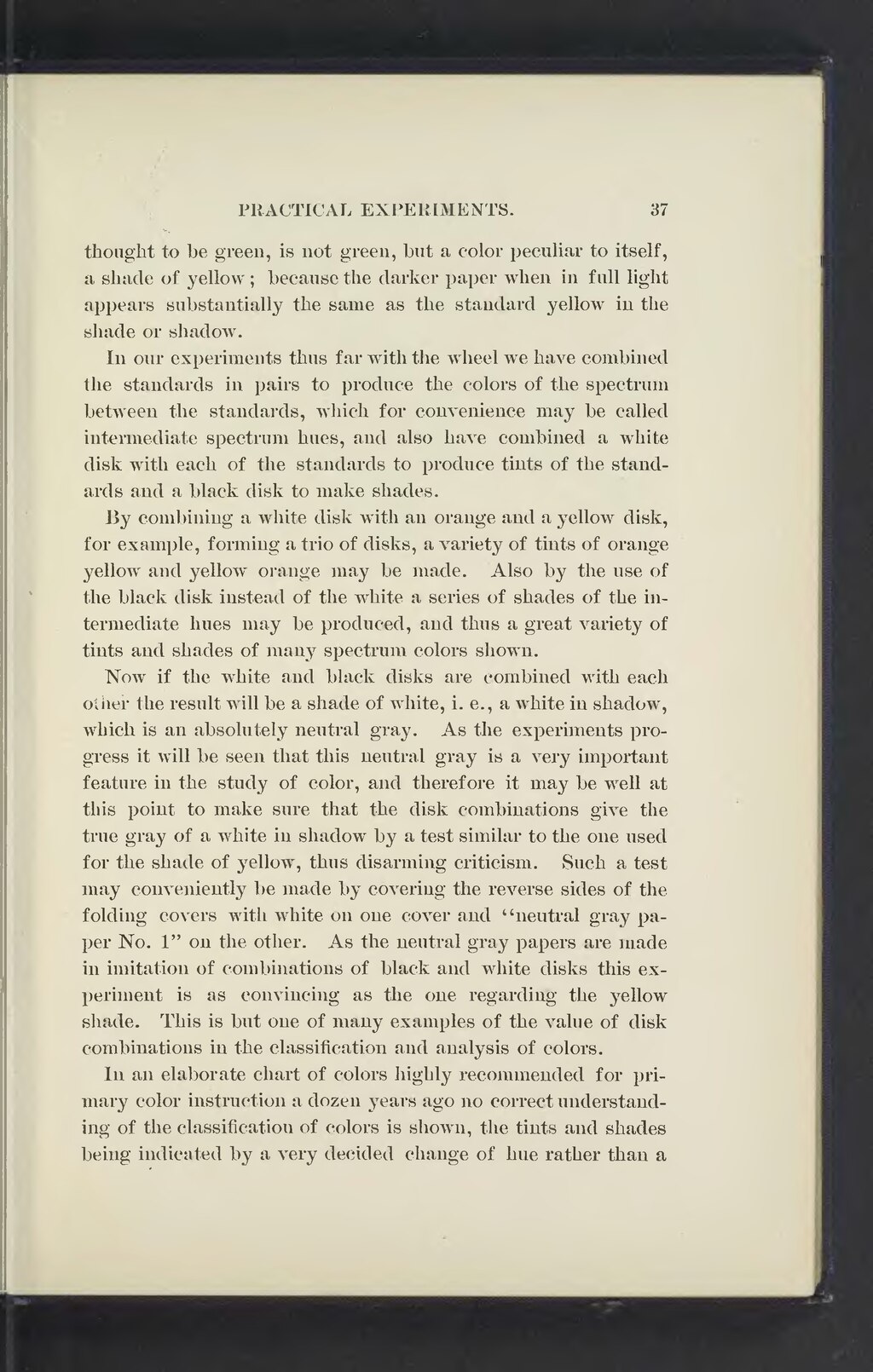thought to be green, is not green, but a color peculiar to itself, a shade of yellow; because the darker paper when in full light appears substantially the same as the standard yellow in the shade or shadow.
In our experiments thus far with the wheel we have combined the standards in pairs to produce the colors of the spectrum between the standards, which for convenience may be called intermediate spectrum hues, and also have combined a white disk with each of the standards to produce tints of the standards and a black disk to make shades.
By combining a white disk with an orange and a yellow disk, for example, forming a trio of disks, a variety of tints of orange yellow and yellow orange may be made. Also by the use of the black disk instead of the white a series of shades of the intermediate hues may be produced, and thus a great variety of tints and shades of many spectrum colors shown.
Now if the white and black disks are combined with each oliier the result will be a shade of white, i. e., a white in shadow, which is an absolutely neutral gray. As the experiments progress it will be seen that this neutral gray is a very important feature in the study of color, and therefore it may be well at this point to make sure that the disk combinations give the true gray of a white in shadow by a test similar to the one used for the shade of yellow, thus disarming criticism. Such a test may conveniently be made by covering the reverse sides of the folding covers with white on one cover and "neutral gray paper No. 1" on the other. As the neutral gray papers are made in imitation of combinations of black and white disks this experiment is as convincing as the one regarding the yellow shade. This is but one of many examples of the value of disk combinations in the classification and analysis of colors.
In an elaborate chart of colors highly recommended for primary color instruction a dozen years ago no correct understanding of the classification of colors is shown, the tints and shades being indicated by a very decided change of hue rather than a
